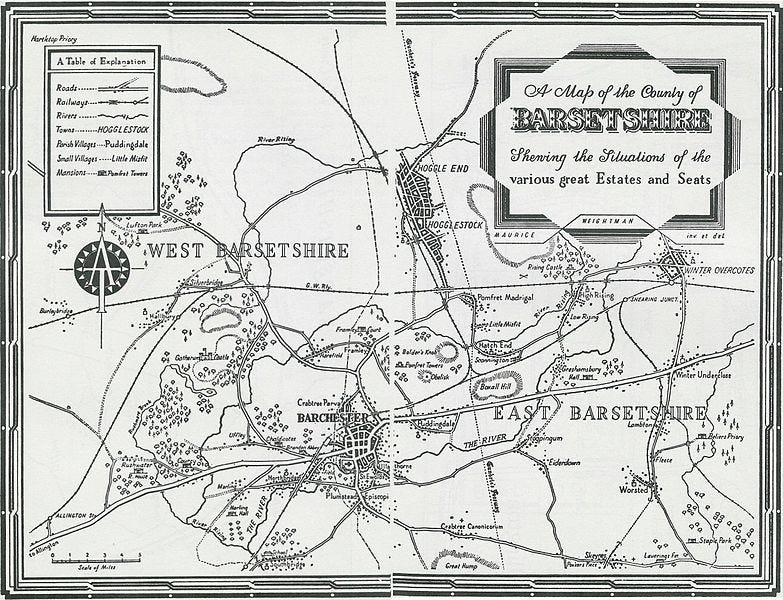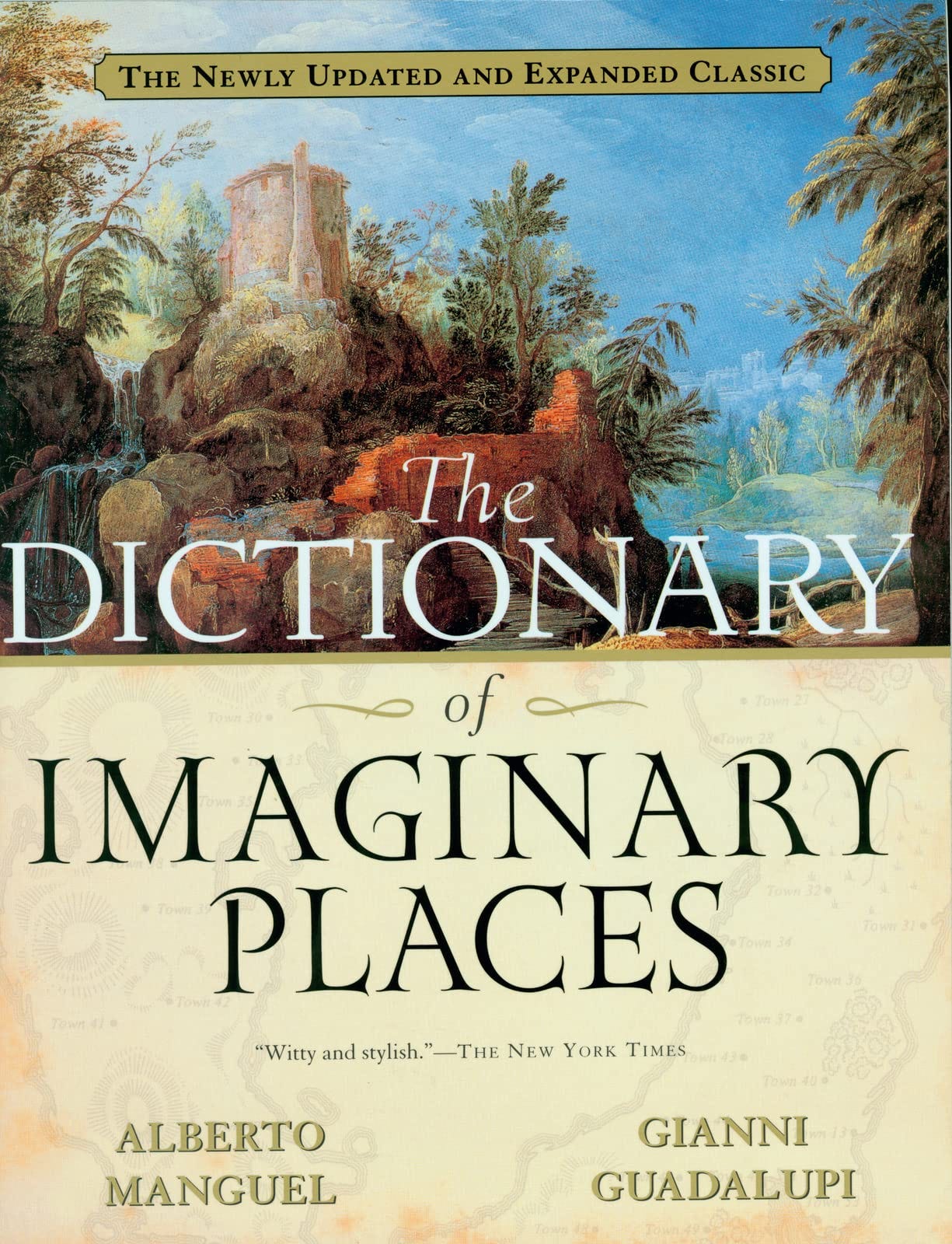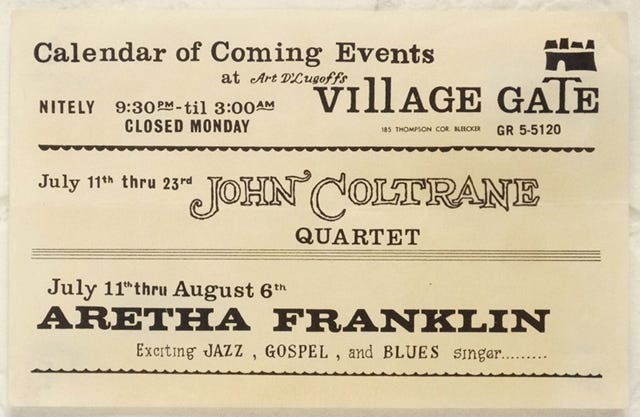Places: Imaginary: Kittiwake Island
I WAS ENCHANTED by that first Larry Peters adventure, The Shapely Brunette, from the moment I opened the book. On the front endpaper was a map of the area where Larry lived, a seacoast town called Murky Bay. The town of Murky Bay was situated on the shore of the bay called Murky Bay, and in Murky Bay were hundreds of islands, among them one called Kittiwake Island, where the Peters family lived. On the back endpaper was a map of the island itself and the floor plans of the Peters house and the workshops where Mr. Peters and the employees of Peters’s Knickknacks worked in secrecy to develop the gewgaws, trinkets, baubles, bric-a-brac, curios, gimcrackery, and brummagems that were the Peterses’ bread and butter. I spent quite some time with the maps and floor plans before I began reading the book, and I returned to them often while I was reading it. There was something about those maps and floor plans that invited the mind to wander, to meander among the islets as one might in a rowboat, to prowl around the house looking for hidden nooks, to imagine the conversations one might have with a companion while meandering among the islets or hiding in a nook. The maps and floor plans were detailed enough to seem to depict real places, and yet they were vague enough not to impose on me the limitations of reality, since I knew that they didn’t depict real places. They permitted—even invited—the fabrication of imaginary details, and if one accepted the invitation, as I did, reality did not intrude with the stern demands it made from day to day: the invented details had only to fit the empty spaces provided for them and be in keeping with the details that were already there; they did not have to be verifiable.
Little Follies, “Call Me Larry”
Places: Imaginary: Spindrift Island

Places: Imaginary: Barsetshire
Of Framley Parsonage I need only further say, that as I wrote it I became more closely acquainted than ever with the new shire which I had added to the English counties. I had it all in my mind,—its roads and railroads, its towns and parishes, its members of Parliament, and the different hunts which rode over it. I knew all the great lords and their castles, the squires and their parks, the rectors and their churches. This was the fourth novel of which I had placed the scene in Barsetshire, and as I wrote it I made a map of the dear county. Throughout these stories there has been no name given to a fictitious site which does not represent to me a spot of which I know all the accessories, as though I had lived and wandered there.
Anthony Trollope, An Autobiography

Places: Imaginary: The Mariner’s New Homeland
He began by creating landscapes; then he created cities; then he created streets and cross streets, one by one, sculpting them out of the substance of his soul— street by street, neighborhood after neighborhood, out to the sea walls of the wharfs, where he then created the ports . . . Street by street, and the people who walked them or gazed down at them from their windows . . . He began to know some of the people, at first just barely recognizing them, but then becoming familiar with their past lives and their conversations, and he dreamed all this as if it were mere scenery to delight the eyes . . . Then he traveled, with his memory, through the country he’d created . . . And thus he created his past . . . Soon he had another previous life . . . In this new homeland he already had a birthplace, places where he’d grown up, and ports from where he’d set sail . . . He began to acquire childhood playmates, and then friends and enemies from his youth . . . It was all different from what he’d actually lived. Neither the country, nor its people, nor even his own past were like the ones that had really existed . . .
The Second Watcher in Fernando Pessoa’s The Mariner
Places: Imaginary: Oz
Aretha Franklin in 1961, at age 19:
Places: Imaginary: Imaginary Places, The Dictionary of
Places: Real: The Village Gate
MD: I’m including a YouTube clip of Aretha Franklin singing “Over the Rainbow” in my annotations to Episode 184—
ELK: From her first album.
MD: Right. Since it’s about Oz, it fits my overall topic for Topical Guide 184—
ELK: “Imaginary Places”?
MD: “Places: Imaginary.”
ELK: Oh. Of course.
MD: As a contrast, I’d like to include a real place—
ELK: A “Places: Real”?
MD: Okay. Yes. I’d like to include a real place that has a link to Oz—
ELK: —through Aretha Franklin! Wonderful!
MD: Well, thank you.
ELK: Do you want me to tell the anecdote?
MD: Actually, I thought I’d tell it myself. I’ve heard you tell it—
ELK: Sure.
MD: —several times.
ELK: Hmm.
MD: Let me know what you think of this: One night in July of 1961, Eric and Madeline drove from Babylon to Queens, where they parked and took the subway to Greenwich Village.
ELK: You might want to make it clear that this wasn’t a date. We were already a couple.
MD: Okay, got it.
ELK: We were teenagers.
MD: Yes.
ELK: Madeline drove.
MD: Okay.
ELK: She drove her parents’ 1960 Studebaker Lark sedan.
MD: Mm-hm.
ELK: It was gray. Wait a minute. I’ve got a picture. [time passed] Here it is.
MD: Wow. Pretty snappy. But—wait—this is a two-door. You said a sedan—and it has a two-tone paint job.
ELK: Let me see. Hmm. You’re right. Well—this isn’t the actual car, of course—I found the picture on the Web—but it looked just like this—except for having four doors and a one-tone paint job—and not those wheels. Someone has customized this, I think.
MD: Okay, let’s let that pass. You went to the Village Gate—
ELK: —where Le Poisson Rouge is now—
MD: —to see John Coltrane. You stayed for both sets. After the second set, as people were getting up to leave, the owner of the Village Gate—
ELK: —Art D’Lugoff—
MD: —came onstage and said something like, “Don’t go yet. We have something special for you, a young singer who has never performed in public before, except in church. Please give a warm welcome to Miss Aretha Franklin.” You stayed. You were amazed. You bought her first album as soon as it came out.
ELK: Yes. That’s it. That’s right. But you might add something like, “As the years went by and Kraft told the Aretha Franklin anecdote to anyone who would listen, he began to wonder whether he was sticking to the facts. Then, in 1992, he and Madeline met Art D’Lugoff at the New Orleans Writers’ Conference, where Kraft gave a reading and led workshops. They told D’Lugoff that they’d done quite a bit of their courting at the Gate, and they asked him whether the Aretha Franklin story was accurate. He endorsed it.”
MD: Okay. Sure. I’ll add that.
See also: Arcadia, Eden TG 40; Arcadia; Shangri-La; Fantasy Land; Raratonga TG 46; Idyllic Landscapes, Arcadia, Shangri-La, Beauty Spots TG 58; Imagination TG 62; Places, Real and Fictional TG 64
[more to come on Monday, January 31, 2022]
Have you missed an episode or two or several?
You can begin reading at the beginning or you can catch up by visiting the archive or consulting the index to the Topical Guide.
You can listen to the episodes on the Personal History podcast. Begin at the beginning or scroll through the episodes to find what you’ve missed.
You can ensure that you never miss a future issue by getting a free subscription. (You can help support the work by choosing a paid subscription instead.)
At Apple Books you can download free eBooks of “My Mother Takes a Tumble,” “Do Clams Bite?,” “Life on the Bolotomy,” “The Static of the Spheres,” “The Fox and the Clam,” “The Girl with the White Fur Muff,” and “Take the Long Way Home,” the first seven novellas in Little Follies.
You’ll find an overview of the entire work in An Introduction to The Personal History, Adventures, Experiences & Observations of Peter Leroy. It’s a pdf document.






Last month I finished listening to “Doctor Thorne” one of the books that takes place in Barsetshire. Always a pleasure returning to Trollope.
I was only 3 years old when Eric and Mad saw John Coltrane perform at the Village Gate. Since he died 6 years later in 1967, I never had the opportunity to see him play live. It has been a theory of mine that true original creativity in jazz, from Armstrong to Ellington to Parker to Coltrane, died with him.